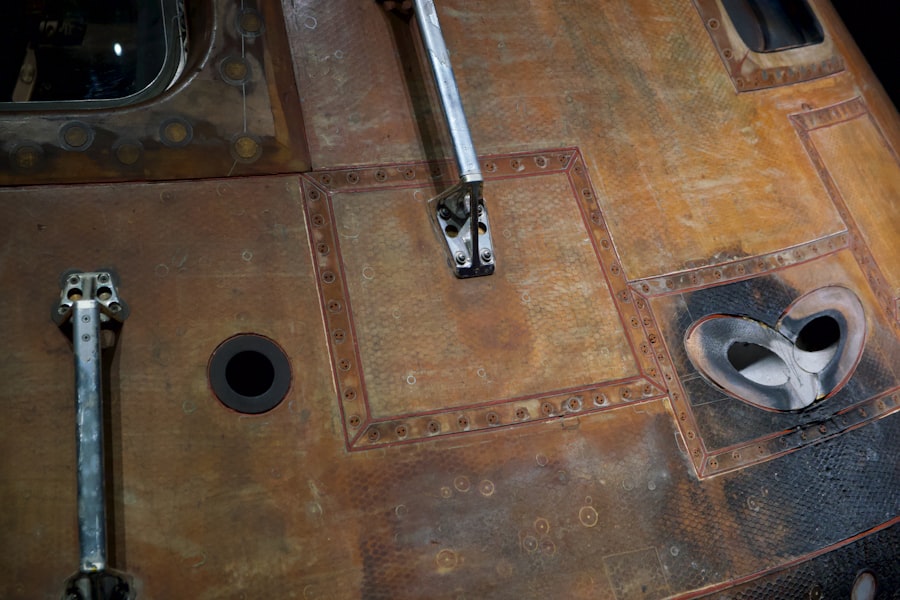China’s space station, known as Tiangong, represents a significant milestone in the nation’s ambitious space exploration agenda. Launched in 2021, the station is designed to serve as a hub for scientific research and international collaboration in low Earth orbit. Unlike its predecessors, which were primarily focused on short-term missions, Tiangong aims to establish a long-term human presence in space.
This development not only showcases China’s technological advancements but also highlights its growing aspirations to play a pivotal role in the global space community. The construction of Tiangong is a testament to China’s commitment to advancing its capabilities in space exploration. With a modular design that allows for expansion and upgrades, the station is expected to host a variety of scientific experiments and international partnerships.
As nations around the world continue to explore the cosmos, China’s space station stands as a symbol of its determination to contribute to humanity’s understanding of space and its potential for future exploration.
The History of China’s Space Program
China’s journey into space began in the 1950s, with the establishment of its first rocket research institute. Over the decades, the program evolved from launching satellites to sending humans into orbit. The successful launch of Shenzhou 5 in 2003 marked a significant achievement, making China the third country to send humans into space independently.
This milestone ignited national pride and laid the groundwork for more ambitious projects, including the development of a modular space station. The early 21st century saw China ramping up its efforts in space exploration, culminating in the launch of the Tiangong program in 2011. The initial Tiangong-1 and Tiangong-2 missions served as testbeds for technologies and operations that would be essential for the construction of a fully operational space station.
These missions allowed Chinese astronauts to practice docking procedures and conduct scientific experiments, paving the way for the more advanced Tiangong station that would follow.
The Components and Design of China’s Space Station

Tiangong is designed with a modular architecture, consisting of a core module and multiple laboratory modules that can be added over time. The core module, named Tianhe, serves as the main living and working area for astronauts, equipped with life support systems, control centers, and sleeping quarters. This central hub is complemented by two laboratory modules, Wentian and Mengtian, which are dedicated to scientific research and experimentation.
The design of Tiangong emphasizes flexibility and sustainability. Each module can be launched separately and assembled in orbit, allowing for upgrades and expansions as technology advances. This modular approach not only enhances the station’s capabilities but also enables international partners to contribute their own modules or experiments, fostering collaboration in scientific research.
The station’s ability to accommodate various payloads makes it an attractive platform for diverse research initiatives.
China’s Role in International Space Collaboration
| Collaboration Area | Metrics |
|---|---|
| Number of International Partners | 15 |
| International Space Station (ISS) Participation | Module development and experiments |
| Joint Missions | Chang’e lunar exploration missions with European Space Agency |
| International Space Conferences | Regular participation and hosting |
As China continues to develop its space station, it has expressed a desire to collaborate with other nations in various aspects of space exploration. Unlike some countries that have historically dominated space endeavors, China is positioning itself as an inclusive partner willing to share its resources and expertise. This approach is evident in its invitations to international astronauts to participate in missions aboard Tiangong and its openness to joint scientific projects.
China’s commitment to international collaboration is further demonstrated through partnerships with countries such as Russia, France, and Italy.
By fostering an environment of cooperation, China aims to build a global network of partnerships that can address common challenges in space science and technology.
The Scientific Research and Experiments Conducted on the Space Station
Tiangong serves as a platform for a wide array of scientific research across various disciplines. The station’s microgravity environment allows scientists to conduct experiments that would be impossible on Earth, leading to breakthroughs in fields such as biology, materials science, and medicine. For instance, researchers are investigating how microgravity affects cell growth and gene expression, which could have implications for understanding diseases and developing new treatments.
In addition to biological studies, Tiangong is also equipped for physical sciences research. Experiments on fluid dynamics, combustion, and material properties are being conducted to gain insights that could improve technologies on Earth. The data collected from these experiments not only contributes to scientific knowledge but also has practical applications in industries ranging from pharmaceuticals to aerospace engineering.
The Future of China’s Space Station and its Impact on Space Exploration

China’s Ambitious Plans for Space Exploration
China’s plans include sending astronauts to the Moon and eventually Mars, with Tiangong acting as a staging ground for these ambitious endeavors.
A Catalyst for Global Cooperation
The impact of China’s space station extends beyond national borders; it has the potential to influence global space policies and collaborative efforts. As more countries recognize the benefits of working together in space, Tiangong could become a focal point for international research initiatives.
Paving the Way for Breakthroughs in Space Exploration
This collaborative spirit may lead to shared missions and joint ventures that push the boundaries of human knowledge and capability in space exploration.
Challenges and Risks of Operating a Space Station
Operating a space station like Tiangong comes with inherent challenges and risks that must be carefully managed. One significant concern is ensuring the safety of astronauts aboard the station. Space is an unpredictable environment, with risks ranging from micrometeoroid impacts to radiation exposure.
Continuous monitoring systems are essential for detecting potential hazards and implementing safety protocols. Additionally, maintaining the station’s systems over time presents logistical challenges. Regular resupply missions are necessary to provide food, equipment, and spare parts for repairs.
Any delays or failures in these missions could jeopardize the well-being of crew members and the integrity of ongoing experiments. As such, meticulous planning and coordination are vital components of successful operations aboard Tiangong.
The Importance of China’s Space Station in the Global Space Race
China’s space station represents not only a technological achievement but also a strategic move within the context of the global space race. As nations compete for leadership in space exploration, Tiangong positions China as a formidable player capable of influencing international norms and standards in space activities.
Moreover, Tiangong serves as a counterbalance to other major players in space exploration, such as the United States and Russia. By establishing its own presence in low Earth orbit, China asserts its independence while also inviting collaboration with other nations. This dual approach enhances China’s standing on the global stage and fosters an environment where shared goals can lead to collective advancements in space science.
In conclusion, China’s space station is more than just an engineering marvel; it embodies the nation’s aspirations for leadership in space exploration and international collaboration. As it continues to evolve, Tiangong will undoubtedly play a pivotal role in shaping the future of humanity’s endeavors beyond Earth. Through scientific research, international partnerships, and ambitious plans for deep-space exploration, China’s space station stands as a beacon of progress in the ever-expanding frontier of outer space.
China recently launched the core module of its space station, marking a significant milestone in its ambitious space exploration program. This achievement comes as no surprise, considering China’s rapid advancements in space technology. For more information on the latest developments in space exploration, check out this article on tornadoextreme.com.

